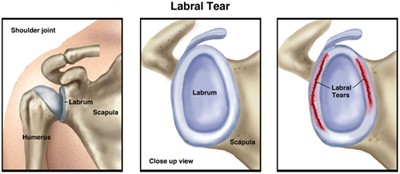One need not be an Olympic contender to experience shoulder injuries that can prove debilitating. Certainly, a variety of mundane tasks from carrying grocery bags to hanging new curtains in your living room windows can cause such injuries, but the vast majority of injuries are caused by excessive, repetitious, overhead motions such as those movements practiced by swimmers, pitchers, tennis players, and weight lifters. In 2006 alone for instance, nearly 7.5 million patients visited their doctors complaining of shoulder problems, and of these visits, over 4.1 million cases involved rotator cuff issues.
Muscles of the Shoulder
The most important shoulder muscles are the four rotator cuff muscles – the subscapularis,supraspinatus, infraspinatus and teres minor muscles.
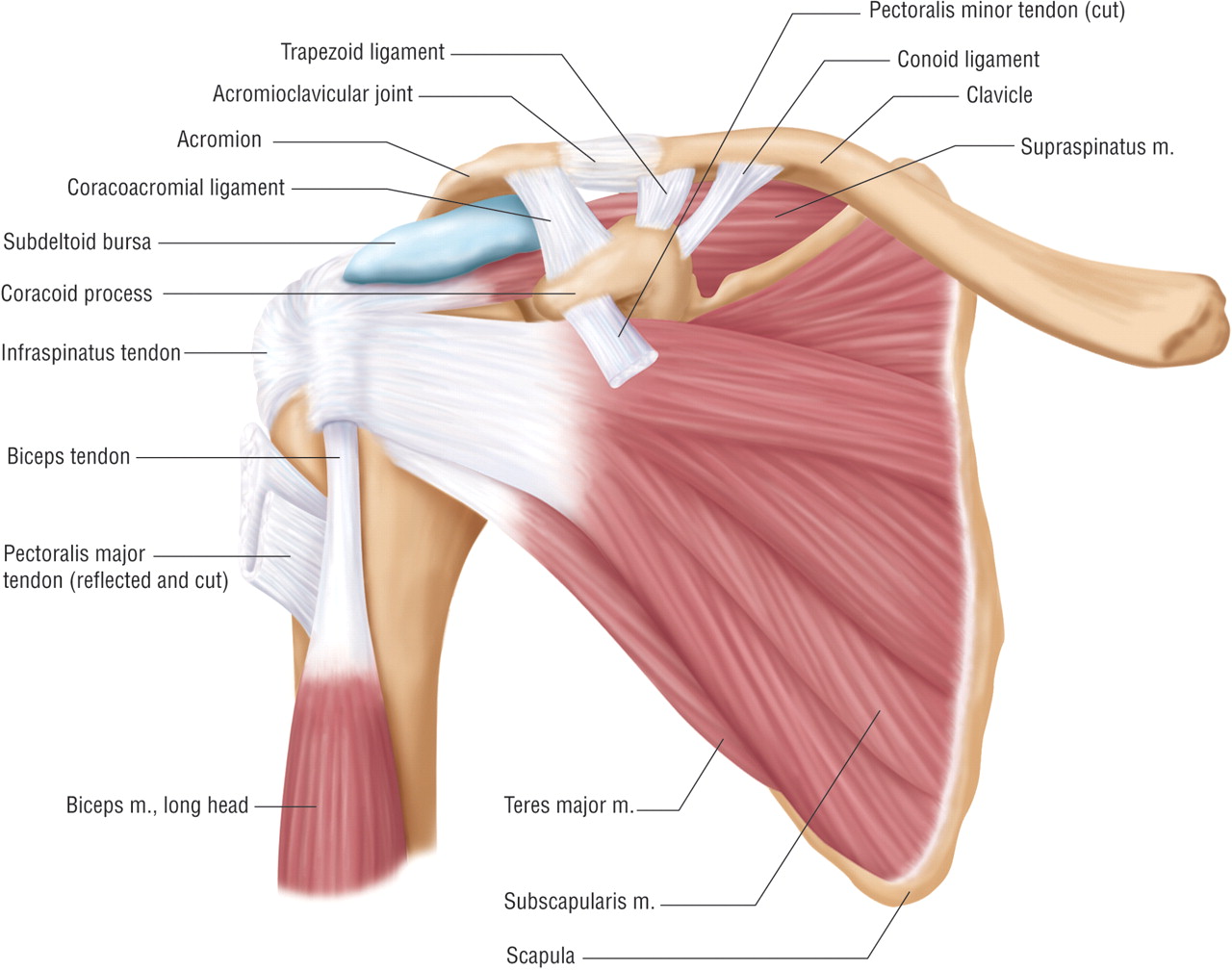
Common Shoulder Injuries and Their Warning Signs
The shoulder is one of the most vulnerable joints in the human body because there is so much range of motion surrounding it. Determining whether your discomfort originates with a shoulder related injury or just the problems associated with living life, you need to be aware of the warning signs of a potential problem. As such, if you are feeling discomfort, ask yourself the following questions:
- Can you rotate your arm in normal positions?
- Does your arm feel like it could pop or slide out of socket?
- Does weakness prohibit you from completing daily functions?
A yes answer to any of these questions is suggestive of more serious problems, and I would strongly encourage you to speak with a healthcare professional to learn about available treatment options. The majority of shoulder related problems are connected to the muscles, tendons, and ligaments rather than the bones.
Most doctors group shoulder related ailments into two categories:
- Instabilities —occurs when one of the shoulder joints is forced out of its normal position. Patients presenting with this condition will feel pain when lifting their arm, or they might feel as if their arm is slipping out of place.
- Impingements—caused by excessive rubbing of the shoulder muscles against the shoulder blade, impingement injuries occur as the result of overhead arm motion.
Shoulder Pain Testing
Testing for Impingement:
- While seated, have a partner raise the arm of the shoulder in question to the front and overhead as far as possible.
- Your partner should use one hand on your arm and the other hand supporting your shoulder blade (scapula).
The space where your rotator cuff tendons and shoulder bursa reside (the sub-acromial space) becomes smaller when your arm is raised overhead and pushed to the limit. If pain is felt in your shoulder, the test is considered positive. The pain is likely caused by impingement of the tendons or bursa in that area of your shoulder.
Biceps Tendonitis Test
1. While seated, raise your painful arm (shoulder) forward to the front.
2. While holding your arm out straight in front of you, turn your palm up.
3. You partner should then push your arm down, while you attempt to resist.
If you feel pain in your shoulder while resisting you could have biceps tendonitis.
Testing for Labrum Tears
The Labrum tear test has two parts: the apprehension and relocation tests.
The Apprehension Test:
1. Begin by lying on your back on a flat, elevated surface (e.g., a bench or table).
2. Move your arm out to the side perpendicular to the torso.
3. Flex your elbow to a ninety-degree angle.
4. Your partner should slowly rotate your arm so your hand moves toward your ear with the partner pushing as far as possible. Maintain the ninety degree elbow flexion.
If you are apprehensive (hesitant) about shoulder movement beyond the joint, this test is considered positive for a possible labrum tear.
The Relocation Test:
You may feel your shoulder is unstable and potentially wants to move out of place – or relocate – especially when your shoulder is in extreme external rotation. If this is the case, have your partner gently press on the front of your shoulder to relocate the joint.
If you feel less relocation and your shoulder feels more stable, believe it or not this test is considered positive and a torn labrum is the probable cause.
AC Joint Separation
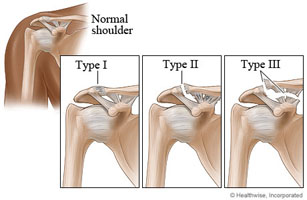
The test for an AC (acromial-clavicular) joint separation is called the AC joint compression test. The shoulder blade (scapula) connects to the collarbone (clavicle) at this joint.
- While seated, have your partner place one hand at the front of your shoulder joint and one hand at the rear.
- The partner should slowly, but firmly press on both sides of your shoulder to compress the AC joint.
If there is a joint separation, pain will be felt at the joint between the downward pressing hands. In addition, pain while raising the arm upward and while sleeping are also indications of an AC joint separation.
Rotator Cuff Tear
- While seated, have your partner raise the painful arm/shoulder to the side and parallel to the floor.
- While you relax the arm, the partner lets your arm drop.
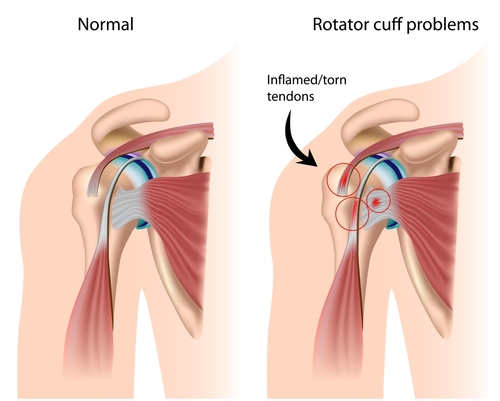
The empty glass test is used to assess the status of the supraspinatus, one of the four rotator cuff muscles. The supraspinatus is located on the upper part of the shoulder joint and is involved in abduction (arm raising).
- While seated or standing, lift the sore arm forward and to the side about thirty to 45 degrees.
- Pronate your wrist so the palm of your hand faces down to the floor (think “thumbs down” position).
- In this position your partner should gently push your arm down while you resist.
If pain or weakness prevents you from maintaining your arm position, you may have a supraspinatus tear.
To test the infraspinatus muscle
- Stand with your arm at the side with the elbow at 90 degrees.
- Have someone resist while you try to externally rotate your arm away from the body.
Pain or the inability to resist indicates a positive test for an infraspinatus strain.
The subscapularis muscle is the muscle that rests between the scapula and your ribcage.
- Start in a standing position and place your hand behind your back with the back part of your hand resting on your lowback.
- Try to raise the back of your hand off your low back or away from your low back.
If you are unable to move your hand away from your low back or you have pain from this movement, then you likely have a subscapularis problem!
Frozen Shoulder
A frozen shoulder is also known as adhesive capsulitis. It occurs slowly over time and can limit functional use of your arm. A frozen shoulder manifests in pain and tightness. This makes it difficult to reach overhead, press a dumbbell, or scratch your back.
There is no special way of diagnosing a frozen shoulder, nor is there a diagnostic test to verify it (e.g., an X-ray or MRI). A frozen shoulder diagnosis is made by observing the specific shoulder moving through a range of motion.
Frozen Shoulder Testing:
- Stand in front of a mirror. A partner should observe you while moving the arm and shoulder. The partner should be noting the range and quality of motion of the shoulder joint.
- Slowly raise both arms to the front and overhead. If you suffer from frozen shoulder, your painful arm may only come up to a point just past parallel with the floor. Additionally, as your scapula elevates towards your ear, you will feel general pain in the shoulder.
- From this position, slowly lower the arm down, and then slowly lift the arm out to the side. Note the range of motion that occurs. If the arm only goes up to a point parallel to the ground – and it's painful – then you likely suffer from frozen shoulder syndrome.
A final test for frozen shoulder is to stand with both arms at the sides and the elbows flexed at ninety degrees. Externally rotate the arms outward. If the frozen shoulder syndrome is present, the painful arm will not rotate outward in comparison to the healthy shoulder.
3 Basic Solutions for Shoulder Pain
Exercising the muscles and ligaments of the shoulder goes a long way towards avoiding a shoulder related injury, but failing to correct faulty positions and poor form is probably the biggest culprit!
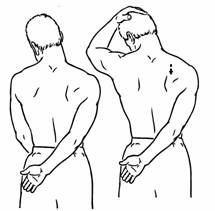
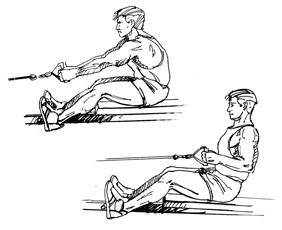
Basic Positioning – Do I really need to talk to you about posture and how it affects EVERYTHING? This is one of the most common problems I see and should be the easiest to fix. When your shoulders start in a bad position and have a movement demand placed on them, it’s unlikely they will be able to transition into a good position while doing the work.Packing your shoulders mostly just means exaggerating your neutral posture. Pull your shoulders down and back and lightly squeeze your scapulae together. Congratulations, your shoulders are now braced and the stabilizers are activated. Doing this before any type of shoulder work, either pulling or pressing, will significantly increase proper muscle activation and joint stability.
Shoulder Pain Sucks But You Can Do Something About it!
Shoulder joint injuries suck because almost everything you do in life requires them. Trying to figure out what happened or what is happening can be a head-scratcher but it shouldn't ruin your life either. With the proper assessment and movement tests you can determine specific pain points and narrow it down to specific injury issues which then lead to specific corrections or therapies.
The tests mentioned above can be done by anyone to determine the possible cause of shoulder joint injuries. You may discover one specific issue (e.g., only a rotator cuff tear) or multiple issues (e.g., biceps tendonitis and impingement) but whatever the case, don't let it get worse. It is imperative to strengthen all the participating muscles as well as the articulations (joint structures) of the shoulder to enhance shoulder health and reduce future vulnerabilities.


